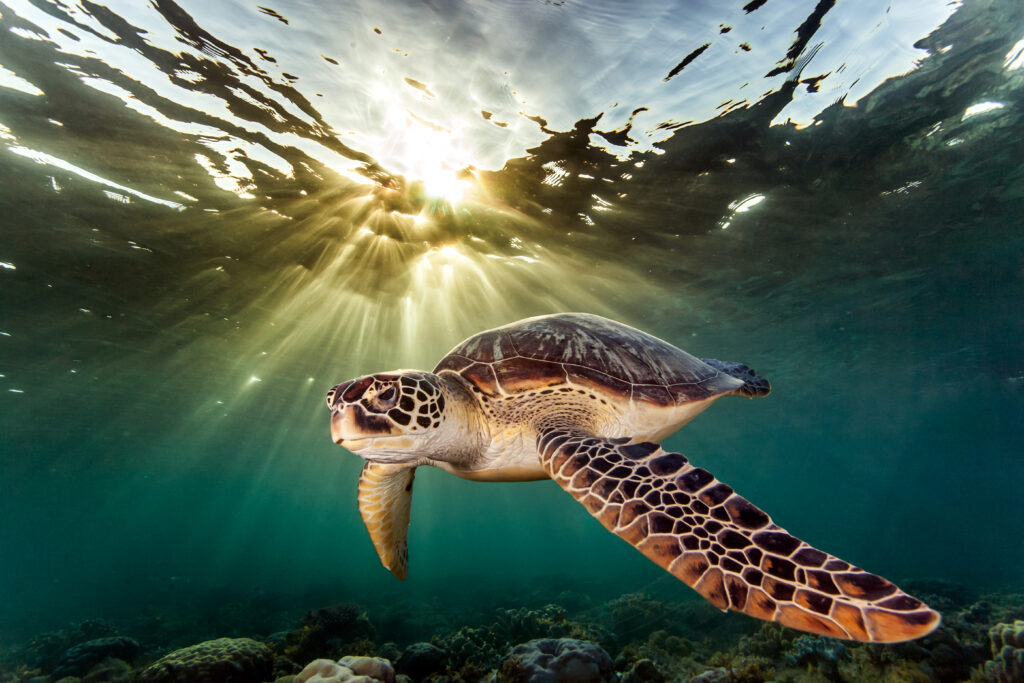Fun and Interesting Facts and Trivia about Green Sea Turtles
Explore the fascinating world of Green Sea Turtles with our collection of fun facts! Discover amazing details about these marine creatures, including their diet, habitat, behavior, and more. From their impressive size to their long lifespan, Green Sea Turtles have many interesting characteristics to learn about. Dive into our collection of cool and interesting facts, trivia, and amazing tidbits about Green Sea Turtles. Whether you’re a nature enthusiast, marine biologist, or simply curious about the world around you, our collection of fun facts about Green Sea Turtles is sure to entertain and educate! Check out our Sea Turtles homepage

Green sea turtles are named for the green color of their fat, which comes from the large amounts of algae and seagrass they consume.
Green sea turtles are found in warm waters around the world, with large populations in the Caribbean, Pacific, and Indian oceans.
Green sea turtles are listed as endangered in many areas due to habitat loss, pollution, and accidental capture in fishing gear.
Green sea turtles can grow to be up to 5 feet in length and can weigh up to 500 pounds.
Green sea turtles are one of the few sea turtle species that are herbivores, and they feed primarily on seagrasses and algae.
Green sea turtles can hold their breath for up to 5 hours while sleeping or resting underwater.
Green sea turtles can live for up to 80 years in the wild.
Female green sea turtles lay between 100-200 eggs in a single clutch, and can lay up to 5-7 clutches in a single nesting season.
Green sea turtle hatchlings are able to swim and dive immediately after hatching, and are capable of swimming thousands of miles before reaching maturity.
Green sea turtles are an important part of marine ecosystems, as they help maintain healthy seagrass beds by grazing on algae that would otherwise overgrow and smother the seagrasses.
Green sea turtles are one of the most common sea turtle species, with an estimated global population of over 200,000 individuals.
Green sea turtles have a flattened body shape and a streamlined shell, which allows them to swim quickly and efficiently through the water.
Green sea turtles are able to navigate using the Earth’s magnetic fields, which they use to find their way back to their natal beach to lay their own eggs.
Green sea turtles have a body temperature that is higher than the surrounding water, which allows them to survive in colder waters than other sea turtles.
Green sea turtles have powerful jaws that are able to crush and chew tough seagrasses and algae.
The green sea turtle is the official state reptile of Florida.
Green sea turtles have a distinctive heart-shaped shell, which can help distinguish them from other sea turtle species.
Green sea turtles are known to make vocalizations, including grunts and hissing sounds, which are thought to be used for communication with other sea turtles.
Green sea turtles are an important part of many cultural traditions and are often featured in artwork and jewelry.
Green sea turtles are able to return to the same nesting beach year after year, using a combination of visual cues and magnetic fields to find their way.

